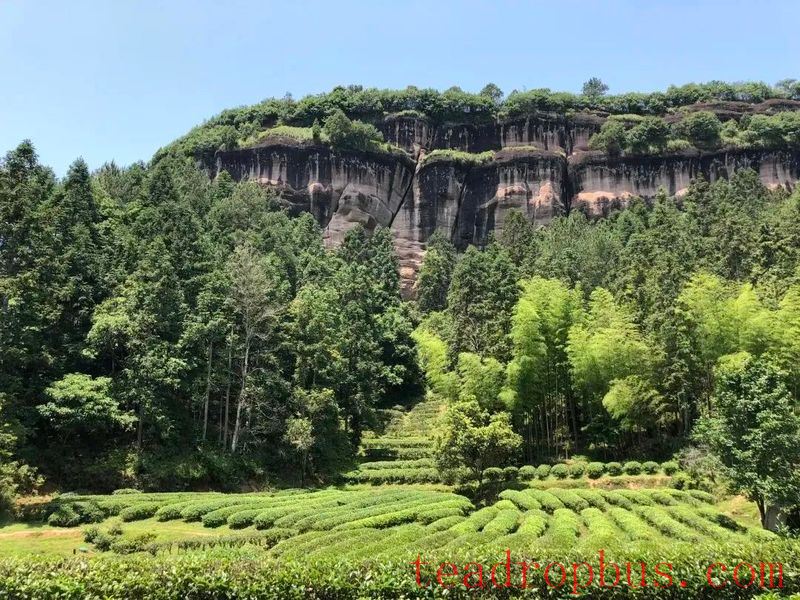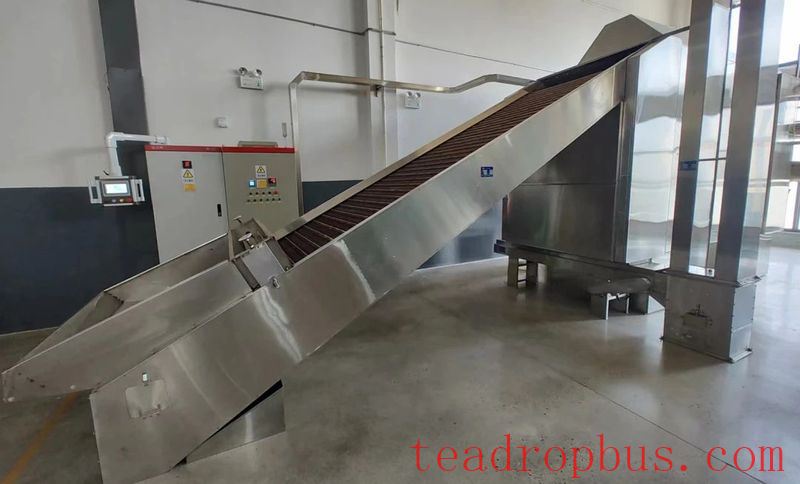The raw Tea leaves, after initial processing into rough tea, undergo further refinement before becoming the finished products available on the market. The primary equipment used in the refinement process includes round sifters, shaking sifters, wind sorters, stone separators, color sorters, conveying devices, blending equipment, dryers, metal detectors, metering and sealing packaging machines, etc. The general process of refined tea production can be divided into rough tea, sorting, sifting, wind sorting, blending, baking, (blending), and packing. After refinement, the products are more hygienic, have clearer grading, more stable product quality, and greater market competitiveness.
The purpose of the baking process is to reduce the moisture content in the tea, extend its shelf life, improve the quality of the tea in terms of color, aroma, taste, and shape, and stabilize the product quality. Using hot air to bake tea is a widely adopted method in current Tea processing practices, with electric heating ovens and automatic chain plate dryers being the most commonly used. Hot air baking has advantages such as stable tea quality, high capacity, and suitability for factory mechanized production, but it also has issues like low thermal efficiency, high energy consumption, and uneven temperature distribution.
Most research on the baking of refined tea focuses on the principles of baking processes, parameter control during baking, and selection of baking types. By controlling different baking processes, the transformation of tea flavor substances is completed, forming various colors, aromas, tastes, and shapes. The setting of baking parameters needs to consider the properties of the raw tea (such as season, variety, grade, origin, tenderness, and degree of fermentation). The temperature, time, and thickness of the baking parameters vary depending on the product's grade, style, or market requirements. There are three main principles of tea drying: conduction, convection, and radiation. Conduction uses a stir-frying pan for contact drying, convection typically employs a hot air dryer, and radiation uses methods such as microwave drying and charcoal baking. Baking plays an important role in the refinement process of tea, but improper control can lead to over-firing, which degrades the quality of the tea and may even render it unsuitable for drinking.
This article analyzes the causes of over-firing during tea baking and proposes a series of technical measures for pre-processing, process control, and post-processing to prevent over-firing in tea baking, providing references for prevention.

▲ Wuyi Mountain Base Tea Garden
01
Manifestations and Causes of Over-Firing in Tea Baking
1. Manifestations of Over-Firing in Tea Baking
Over-firing in the baking of refined tea means that the baking intensity exceeds the target level. There are two manifestations of over-firing: one is when the baked tea's intensity is higher than that of the standard sample; the other is when there is no standard sample (referred to here as improvement-type baking), and the baked tea's intensity is higher than the expected target level. Severe over-firing can result in a scorched taste or even ignition.
2. Causes of Over-Firing in Tea Baking
Firstly, poor uniformity and purity of the raw materials lead to inconsistent heat resistance. Different batches of tea have varying degrees of heat resistance due to differences in variety, harvesting season, region, and processing methods. Raw materials that are tender, fine, tightly bound, and thick are more heat-resistant, while those that are old, loose, coarse, and thin are prone to over-firing. Raw materials that are not well-processed often result in localized over-firing during baking.
Secondly, the control of the baking process and the operation of the machinery directly affect the baking intensity. Factors in the external environment of the baking machine that influence over-firing mainly manifest as follows: in winter, when temperatures are low, human error in temperature adjustment can cause over-firing, or even ignite the tea during final baking. Abnormal operations of the baking machine or electrical control equipment might lead to excessive over-firing, such as issues with the temperature control device or heating device causing the temperature to exceed the set point significantly, or problems with the chain plate baking machine like the chain plate falling off or stopping.
Thirdly, there is a risk of over-firing in the storage environment after baking. If the tea is not cooled down before being packed into boxes or bags, over-firing can occur, especially after medium and final baking. This is because the tea retains a high temperature after baking, and if it is not cooled down and placed in storage without adequate cooling measures, it can undergo “secondary baking” due to the residual heat, leading to a finished product with higher baking intensity than the target level. Final baking without proper cooling can cause the tea to “smoke,” resulting in an off-flavor and loss of drinkability.
02
Preparations Before Baking
1. Processing Raw Materials for Classification Baking and Improved Uniformity
Before baking, raw materials should undergo sifting, wind sorting, color sorting, and manual sorting. Sifting separates the raw materials into different coarseness levels for subsequent classification baking. Coarse tea can be spread thicker with lower temperatures and shorter times, while finer tea requires the opposite treatment. Middle-grade tea is relatively solid and more heat-resistant. After wind sorting, the easily scorched lighter pieces are removed. Color sorting and manual sorting remove coarse stems, lighter pieces, grass, and other impurities, improving the purity of the tea.

▲ Sifting and Color Sorting to Remove Impurities
2. Trial Baking of Small Samples to Determine Appropriate Intensity
Before large-scale production baking of a batch of tea, trial baking of small samples should be conducted. First, bake a reference sample with the desired intensity, then proceed with large-scale production. Most tea companies use blending techniques, where two or more different raw materials are combined. To achieve the final blend's quality, reasonable target intensities and baking plans must be determined for each component tea, ensuring more stable and accurate large-scale production and avoiding under-baking or over-firing.
In accordance with standard sampling methods, samples representing different proportions of the blended teas are taken. Based on the appearance and internal quality of the raw material and the target baking intensity to be achieved, a baking plan is determined. After testing different baking plans, the baking intensity and plan for large-scale production of different raw materials are finalized.
03
Control During the Baking Process
1. Establishing Operating Procedures and Making Reasonable Adjustments in Practice
The formulation and implementation of daily operating procedures are crucial for standardizing production and management, and stabilizing product quality. These include regular standard operating procedures, such as the “Baking Operation Regulations” and “Cleaning Regulations for Baking Machines,” as well as special handling methods, such as the “Emergency Handling Regulations for Baking Machine Fires” and the “Regulations for Special Teas (Fine Teas, Stems)” etc. It is important to enforce these regulations and keep comprehensive records for traceability.
After establishing the regulations, they need to be reasonably adjusted in practice. For example, the “Cleaning Regulations for Baking Machines” should be continuously refined in practice, particularly for automatic chain plate baking machines that are used continuously for a period of time. Fine tea particles accumulate in corners near the air intake and gaps in the machine body, and if not promptly cleaned, they can produce a scorched taste or even sparks. Therefore, specific refinements should be made based on the type of tea and the baking intensity. Generally, the cleaning frequency should be higher for teas with a high content of fine particles and high baking intensity. The regulations should be scientifically adjusted in practice through repeated PDCA (Plan, Do, Check, Act) cycles to better align with actual conditions.

▲ Dryer
2. Establishing and Implementing a Tea Baking Intensity System to Control Changes in Intensity
A tea company can establish an intensity system based on its own characteristics. Considerations should include the main product features, existing equipment, and operability. The system can be divided into four, five, or more levels of intensity, such as light, medium-light, medium, medium-final, and final intensity. Baking personnel should systematically understand the quality characteristics of tea at different baking intensities to evaluate whether the standard